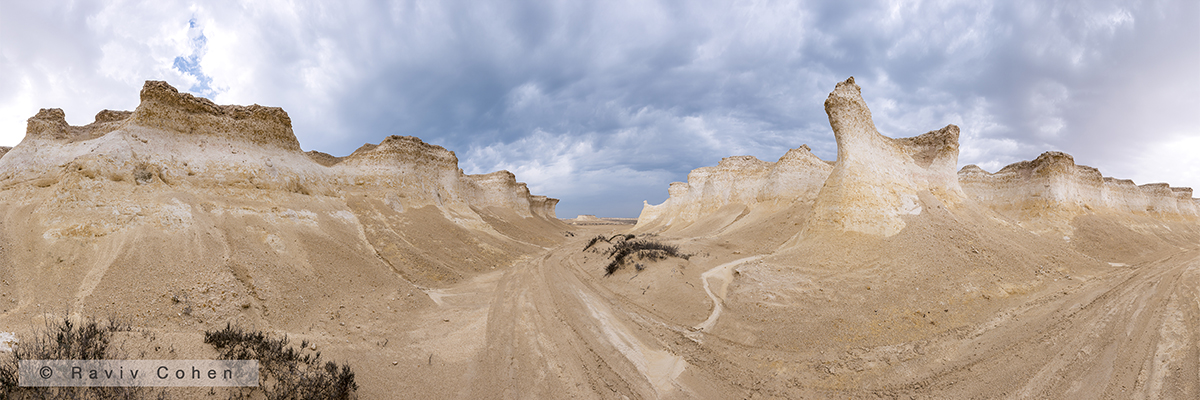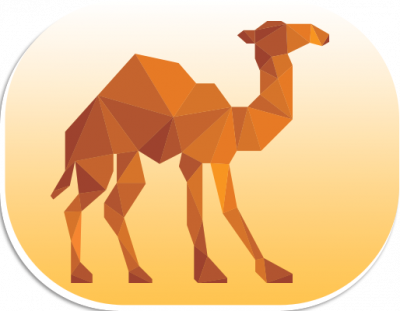
(ومفردها جبل)
تعتبر دولة قطر من الناحية الجيولوجية صحراء من نوع أرصفة الكاربونات الدرعية، حيث تحيط بالتلال الصخرية القديمة سهول منحدرة ومنجرفة ورمال ريحية (رمال تهب عليها الرياح). ومن خلال مقياس زمني جيولوجي، شهدت شبه الجزيرة العربية العديد من دورات ارتفاع مستوى سطح البحر وانخفاضه وكذلك فيضان النهر، مما تسبب في ظروف مناخية من البلالة والرطوبة إلى الجفاف. في غياب غطاء نباتي على وجه الأرض وبفعل ملايين السنين من الزمن الجيولوجي، يظهر بشكل واضح على الوجه العمودي لهذه الجبال الصخرية طبقات متراصة من رواسب مختلفة ملونة باللون الأبيض والأخضر والأرجواني والوردي والبرتقالي. في بعض الأحيان، إهترأت جوانب الحجر الجيري للتلال الصغيرة أو المعزولة بفعل عوامل التجوية بطريقة تشبه هيئة الجزء الأبيض المثمر للفطر مع غطاء مسطح وساق تكون جوانبها داخلة بها.
وتبعاً لمنشأ المواد الترسبية، يمكن مشاهدة الكائنات البحرية المتحجرة أو الحصى الغرينية (النهر) الأكثر نعومة على وجه الطبقات الصخرية أو على السطح العلوي للجبال الصخرية. تقع الجبال الصخرية في الغالب على طول منطقة التحدب في دولة قطر، والذي يفصل قطر تقريبًا في الوسط ويمتد من الشمال إلى الجنوب أو على طول منطقة التحدب في مدينة دخان القريبة من الساحل الغربي. بلغ أعلى ارتفاع تم تسجيله 103 متراً في طوير الحمير جنوباً.
يشبه مجتمع النباتات في الجبال الصخرية تلك في منطقة الصحراء الصخرية، وقد يتكون من النباتات الحولية مثل الحدق (Aizoon canariense) و شوك الضب (Blepharis ciliaris) والعنبسيس (Anchusa hispida) والعتر (Glossonema varians) والرقروق (Helianthemum kahiricum و Helianthemum lippii) والهرم (Zygophillum quatarense) والكلجمان (Savignya parvifora). في بعض الأحيان، تُشاهد أيضًا نباتات طويلة إلا أنها قليلة، وتشمل الشجيرات مثل العوسج (Lycium shawii) وأشجار السلم (Acacia tortilis وAcacia ehrenbergiana) والنبق (Ziziphus nummularia)، ونادراً الغاف (Prosopis ineraria). يعيش على الجانب السفلي أو حتى في داخل الحصى النهرية من قمم التلال مجتمعاً حيويًا نابضاً بالحياة من البكتيريا، ويستخدم هذا الأسلوب من الحياة الخفية لتفادي تقلبات الصحراء، وهو تكيف شائع للأنواع التي تعيش في الصحراء.
وفي داخل الشقوق الصخرية للجبال، تقيم البومة النسرية الفرعونية المهيبة، بعيونها البرتقالية الكبيرة ومخالبها الحادة، وهي قوية بما فيه الكفاية لإفتراس الثعالب الصغيرة. تضع البومة النسرية الفرعونية بيضها وتربي صغارها هناك خلال فصل الشتاء. تشمل الكائنات الأخرى التي قد توجد في هذه البيئة الأرنب الصحراوي ومجموعة متنوعة من الطيور والسحالي وغيرها.
وتتضمن التهديدات التي تؤدي إلى فقدان التلال الصخرية والأنواع التي تعيش فيها التراكم الطبيعي للأتربه في الشقوق الصخرية، بينما تؤثر قيادة السيارات في البر وظاهرة التغير المناخي والتصحرأعالي التلال.
© Chatziefthimiou AD. 2019. Terrestrial Environment: Jebels – Rocky Hills – Mesas. Qatar e-Nature.
المصادر:
Cuttler R, 2013
Sadiq AM and Nasir SJ, 2002
Edgell HS, 2006
Powell JT et al, 2015
Castilla AM et al, 2014
Mohedano I et al, 2014
Leblanc J, 2013







